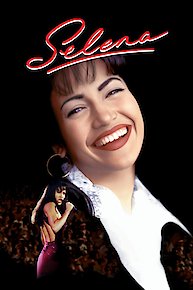
Dance for Camera
Where to Watch Dance for Camera

Dance for Camera is a captivating film from 2003 that blends the worlds of contemporary dance and the cinematic arts, creating a rich, expressive narrative that transcends the conventional boundaries of storytelling. Directed by a visionary filmmaker, the film stars talented performers James Allodi and Laura Taler, whose dynamic chemistry and expressive movements bring the story to life in an innovative and heartfelt manner.
Set against the backdrop of a bustling urban landscape, Dance for Camera explores the intricate relationships and emotional journeys of its characters through a unique combination of dance and visual storytelling. The film does not adhere strictly to a conventional plot; instead, it functions as a visual poem, drawing viewers into an experience where movement and emotion intertwine seamlessly. This conceptual framework provides a refreshing take on narrative cinema, showcasing how dance can convey deep feelings and storytelling in ways that dialogue alone cannot.
James Allodi plays the role of a passionate artist grappling with his own anxieties and insecurities. The character serves as a metaphor for the creative struggle that many artists face, showcasing the challenges of finding one’s voice amidst societal expectations and personal doubts. Allodi’s portrayal is both poignant and relatable, resonating with anyone who has ever felt the pressure of self-expression. His ability to communicate complex emotions through subtle facial expressions and body language adds depth to his character, making his journey all the more compelling.
Laura Taler, on the other hand, plays a pivotal role as a dancer whose powerful performances embody grace, intensity, and vulnerability. Her character serves as both a muse and a catalyst for Allodi's character, reflecting the transformative nature of art and its ability to inspire change and resilience. Taler’s dance sequences are breathtakingly executed, showcasing her skill and dedication, while also enhancing the film’s emotional core. Each movement is meticulously crafted, creating a visual language that speaks to the viewer on multiple levels.
The cinematography in Dance for Camera is nothing short of extraordinary. The camera work, fluid and dynamic, captures the intricacies of each dance performance while simultaneously delving into the intimate moments shared between the characters. The filmmakers utilize innovative angles, creative framing, and thoughtful editing to create a visually stimulating experience that complements the rhythmic and emotive quality of the dance. This artistic choice emphasizes the connection between the characters and their environment, positioning the city as a silent witness to their struggles and triumphs.
Accompanying the striking visuals is a thoughtfully composed score that elevates the emotional depth of the film. The music acts as a powerful undercurrent, guiding the audience through the ups and downs of the characters' journeys. It enhances the dance sequences, creating an auditory experience that couples beautifully with the visual elements. Together, the music and choreography foster a sense of unity, reinforcing the film’s themes of passion, longing, and self-discovery.
One of the most outstanding attributes of Dance for Camera is its commitment to portraying the profound impact of art on personal growth and societal connection. The film illustrates how creativity can offer solace and clarity in moments of turmoil, highlighting the importance of artistic expression as a means of understanding oneself. The characters’ interactions evolve as they navigate their shared experiences, emphasizing the idea that art serves as both a refuge and a bridge that connects individuals with one another.
Throughout the film, viewers are prompted to reflect on their own artistic aspirations and the struggles that accompany them. The exploration of vulnerability, desire, and the pursuit of creativity resonates on a universal level, inviting audiences to embrace their own artistic identities, regardless of their medium of choice. This introspective aspect provides a layer of depth that encourages engagement and personal connection—a hallmark of truly impactful cinema.
Dance for Camera is a celebration of the beauty and complexity of human emotion, encapsulated within the expressive art form of dance. By marrying movement with cinematic techniques, the film invites viewers to experience a journey that is as much about the characters' internal battles as it is about their pursuit of artistic expression. The narrative unfolds visually, inviting audiences into a world where dance becomes a reflection of the soul, allowing for a powerful exploration of identity and connection.
In conclusion, Dance for Camera is a beautifully crafted film that speaks to the heart of what it means to be an artist. Through its stunning performances by James Allodi and Laura Taler, as well as its innovative blending of dance and film, the movie offers a unique and inspiring perspective on creativity, vulnerability, and the ties that bind us all. It stands as a testament to the transformative power of art and its ability to illuminate the human experience in ways that resonate far beyond the screen.
Dance for Camera is a Music movie released in 2003. It has a runtime of 93 min. Critics and viewers have rated it moderate reviews, with an IMDb score of 6.8..






















